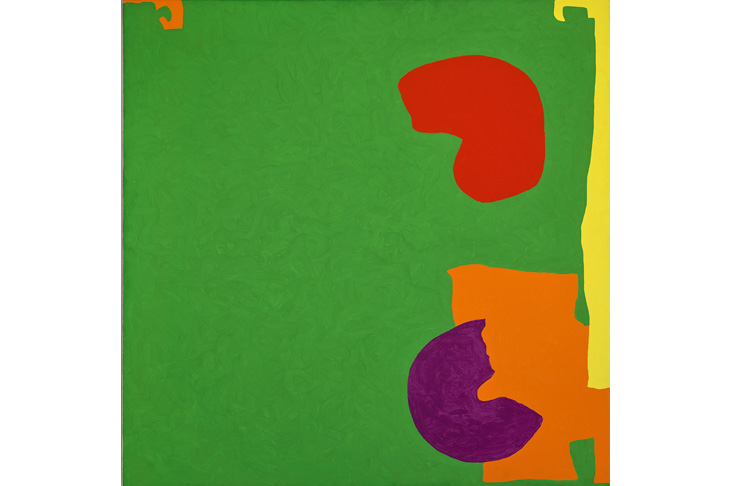Patrick Heron’s paintings of the 1950s melt like ice creams. You want to run your tongue along the canvas and catch the drips. They capture a sense of summer holiday sea-and-scampi freedom. When Heron (1920–99) was five, his father, a blouse and silk-scarf manufacturer, moved from Leeds to St Ives in Cornwall. Heron played with the children of the potter Bernard Leach, and with Peter Lanyon, a friend from Sunnycroft primary school and a future painter, founded the Golden Harp Club, a society for the preservation of culture in England.
After the Slade School of Fine Art in London, Heron returned to St Ives in 1944 on an ‘approved placement’ for conscientious objectors at the Leach Pottery. He met Ben Nicholson, Barbara Hepworth and Naum Gabo. In 1956, he settled with his wife Delia at Eagle’s Nest in Zennor, a gorse-and-wildflower walk from St Ives. He talked of the garden ‘vibrating with camellias and azaleas’ in the summer. He remembered the ‘extraordinary effervescence’ of flowers ‘erupting all over the garden’. ‘Azalea Garden: May 1956’, in Tate St Ives’s permanent collection, is a hotly shimmering curtain-raiser to the gallery’s Patrick Heron retrospective. Stop and sun your face against it on your way in.
Heron insisted that looking at a painting was an active, not a passive thing. Your eye must circle, sweep, jump. His colours dance, pulse and boff you on the nose. His exhilarating joy in colour is catching. The painting that had a greater influence on his work than any other was Henri Matisse’s ‘The Red Studio’ (1911), which Heron visited repeatedly when it was shown at the Redfern Gallery in London in 1944. He was fascinated by Matisse’s planes of unmixed colours, which, with a sleight of hand and brush, give the illusion of depth.









Comments
Join the debate for just £1 a month
Be part of the conversation with other Spectator readers by getting your first three months for £3.
UNLOCK ACCESS Just £1 a monthAlready a subscriber? Log in